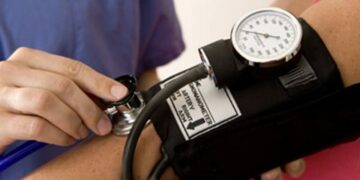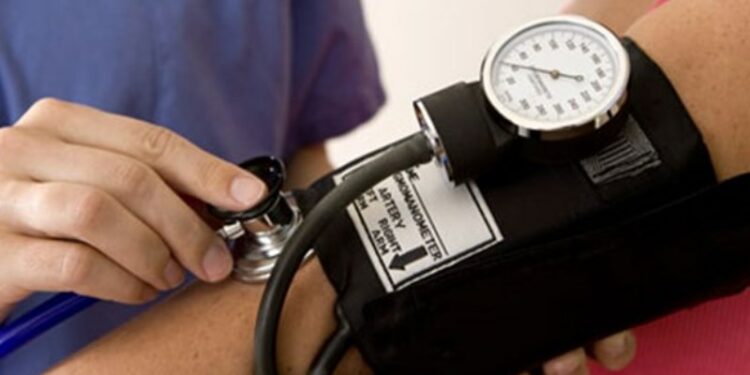Τα ευρήματα νέας μελέτης που εξέπληξαν τους ερευνητές. Ποιο λάθος κάνουν ακόμα και οι γιατροί, οι οποίοι συνήθως έχουν ένα πιεσόμετρο στο ιατρείο τους για όλους τους ασθενείς.
Τι κίνδυνοι υπάρχουν.
Αν μετράτε την αρτηριακή πίεσή σας με πιεσόμετρο μπράτσου, ελέγξτε πόσο καλά σας ταιριάζει. Το μέγεθος της περιχειρίδας μπορεί να κάνει τη διαφορά στη διάγνωση της υπέρτασης, προειδοποιούν επιστήμονες από τις ΗΠΑ.
Τα πιεσόμετρα (ή σφυγμομανόμετρα) μπράτσου διαθέτουν περιχειρίδες πολλών μεγεθών. Οι ισχύουσες κατευθυντήριες οδηγίες για την υπέρταση συνιστούν να χρησιμοποιούν οι γιατροί εκείνη που ταιριάζει καλύτερα στο μπράτσο του ασθενούς. Στην πράξη, όμως, στα περισσότερα ιατρεία και κλινικές υπάρχει ένα πιεσόμετρο, με μία μέσου μεγέθους περιχειρίδα, για όλους τους ασθενείς.
Στη νέα μελέτη, οι επιστήμονες θέλησαν να εξακριβώσουν εάν η τακτική αυτή αποδίδει. Το συμπέρασμά τους ήταν αρνητικό.
Μικρό πιεσόμετρο σε μεγάλα μπράτσα
Όπως διαπίστωσαν, όταν χρησιμοποιούσαν ένα μέσο πιεσόμετρο σε ασθενείς με μεγάλα μπράτσα, οι μετρήσεις δεν ήταν διόλου ακριβείς.
Ειδικά στα άτομα με πολύ μεγάλα μπράτσα, η μέτρηση της συστολικής πίεσης συχνά ήταν αυξημένη κατά 20 mmHg. Πολύ μεγάλα μπράτσα έχουν συχνά οι παχύσαρκοι ασθενείς, όσοι κάνουν βάρη κ.λπ.
Η διαφορά αυτή είναι αρκετή για να θεωρηθεί υπερτασικός ένας άνθρωπος ο οποίος στην πραγματικότητα έχει φυσιολογική ή ελαφρώς αυξημένη πίεση. Θα μπορούσε π.χ. να έχει πίεση 120 mmHg (ή 12, όπως είθισται να αποκαλείται) και να μετρηθεί σαν να έχει 140.
Τα νέα ευρήματα εξέπληξαν ακόμα και τους ίδιους τους ερευνητές. «Δεν περιμέναμε το πιεσόμετρο να κάνει τόσο μεγάλη διαφορά στη μέτρηση», παραδέχτηκε η επικεφαλής ερευνήτρια Dr. Tammy Brady, αναπληρώτρια καθηγήτρια Παιδιατρικής στο Πανεπιστήμιο Τζωνς Χόπκινς, στη Βαλτιμόρη. «Τα 20 χιλιοστά της στήλης υδραργύρου (mmHg) είναι πολλά».
Εν τούτοις, η μελέτη έδειξε ότι το 39% των συμμετεχόντων με μεγάλα μπράτσα διαγιγνώσθηκαν λανθασμένα με υπέρταση, επειδή η περιχειρίδα ήταν πολύ μικρή!
Μεγάλο πιεσόμετρο σε λεπτά μπράτσα
Πρόβλημα υπήρχε όμως και στα άτομα με πολύ λεπτά μπράτσα. Όταν οι ερευνητές μετρούσαν την πίεσή τους με ένα μέσου μεγέθους πιεσόμετρο, αυτό «έχανε» κατά μέσον όρο 4 mmHg από την συστολική πίεσή τους.
Η διαφορά αυτή είναι σαφώς μικρότερη απ’ ό,τι στα άτομα με μεγάλα μπράτσα. Ωστόσο η συνέπειά της είναι πολύ ανησυχητική. Αν δεν είχε γίνει επανέλεγχος με το σωστό πιεσόμετρο, δεν θα είχε διαγνωστεί με υπέρταση το 22% των συμμετεχόντων σε αυτό το σκέλος της μελέτης!
«Τα ευρήματά μας είναι πάρα πολύ ανησυχητικά. Πιστεύουμε ότι πολλοί γιατροί δεν γνωρίζουν πόσο σημαντικό είναι το μέγεθος της περιχειρίδας», τόνισε η Dr. Brady.
Μαζί της συμφώνησε ο Dr. Willie Lawrence, επικεφαλής της Συμβουλευτικής Επιτροπής για τον Έλεγχο της Υπέρτασης της Αμερικανικής Εταιρείας Καρδιάς (AHA). «Η σωστή μέτρηση της αρτηριακής πίεσης είναι ουσιώδης», είπε. «Απαιτεί συγκεκριμένα βήματα, το πρώτο εκ των οποίων είναι να χρησιμοποιείται η κατάλληλη περιχειρίδα σε κάθε ασθενή». Δυστυχώς, «ο κόσμος δεν κατανοεί πόσο σημαντικό είναι αυτό», πρόσθεσε.
Η νέα μελέτη
Η Dr. Brady παρουσίασε τη νέα μελέτη στο Συνέδριο Επιδημιολογίας, Πρόληψης, Τρόπου Ζωής & Καρδιομεταβολικής Υγείας 2022 (EPI-Lifestyle 2022). Το συνέδριο διοργανώνει στο Σικάγο η AHA.
Όπως είπε, στη μελέτη συμμετείχαν 165 εθελοντές, που υποβλήθηκαν σε μέτρηση της αρτηριακής πίεσης. Αναλόγως με το μέγεθος των μπράτσων τους μετρήθηκαν:
- Με ένα πιεσόμετρο με μέσου μεγέθους περιχειρίδα και
- Με ένα πιεσόμετρο με περιχειρίδα που ταίριαζε στο μπράτσο τους
Οι 39 από τους συμμετέχοντες είχαν πολύ μεγάλα μπράτσα. Η περίμετρός τους κυμαινόταν μεταξύ 40 και 55 εκατοστών. Όταν η πίεσή τους μετρήθηκε με την κατάλληλη περιχειρίδα, η μέση τιμή της συστολικής πίεσης ήταν 124 mmHg. Η τιμή αυτή είναι κάτω από το όριο της υπέρτασης.
Όταν, όμως, η πίεσή τους μετρήθηκε με την μέση περιχειρίδα, η συστολική πίεση έφτασε στα 144 mmHg. Η τιμή αυτή αντιστοιχεί στην σταδίου 2 υπέρταση!
Το αντίθετο συνέβη στους εθελοντές με πολύ μικρή περίμετρο μπράτσων (22,5 έως 25 εκατοστά). Με την μέση περιχειρίδα, η συστολική πίεσή τους ήταν 119 mmHg κατά μέσον όρο. Με την σωστή, μικρότερη περιχειρίδα όμως ήταν 123 mmHg.
Οι τιμές της πίεσης
Η συστολική πίεση είναι ο μεγάλος αριθμός στη μέτρηση. Αντιπροσωπεύει την πίεση που ασκεί το αίμα στο τοίχωμα των αρτηριών καθώς φεύγει από την καρδιά. Αντίστοιχα, η διαστολική πίεση είναι ο μικρός αριθμός στη μέτρηση. Αντιπροσωπεύει την πίεση όταν η καρδιά ξεκουράζεται μεταξύ των κτύπων.
Η συστολική αρτηριακή πίεση θεωρείται αυξημένη όταν υπερβαίνει τα 120 mmHg. Οι τιμές μεταξύ 130 και 139 mmHg θεωρούνται σταδίου 1 υπέρταση.
Iatropedia.gr































